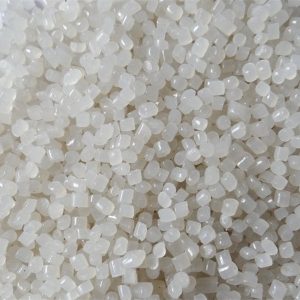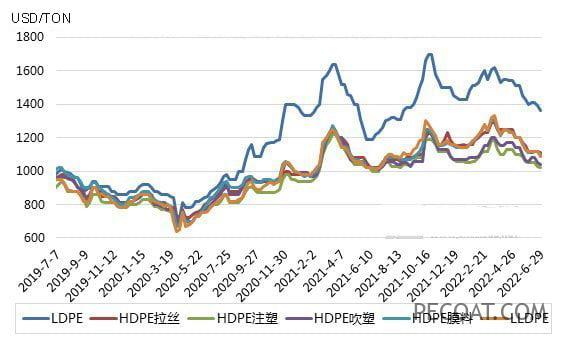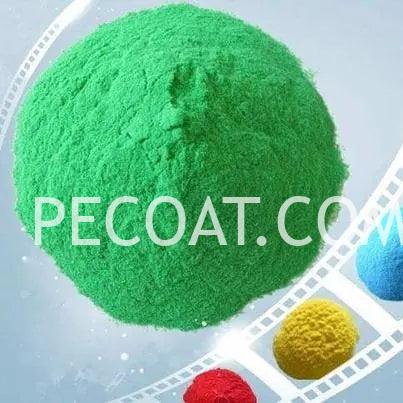Polyethylene Resin – Material Encyclopedia

What is polyethylene resin
Polyethylene resin is a high polymer compound formed by the polymerization of ethylene molecules. It is also one of the most widely used plastics in the world. It has the characteristics of low density, high strength, corrosion resistance, high temperature resistance, not easy to aging, easy processing, etc. It is widely used in packaging, construction, home, medical, electronics and other fields.

The price of polyethylene resin
According to the monitoring data of the industrial product market, the overall price of polyethylene has shown a fluctuating upward trend in the past few years. The specific data are as follows:
- In 2022: At the beginning of the year, the price of polyethylene was around 9,000-9,500 US dollars per ton, and by the end of the year, it had risen to around 12,000-13,000 US dollars per ton.
- In 2021: At the beginning of the year, the price of polyethylene was around 1,000-1,100 US dollars per ton, and by the end of the year, it had risen to around 1,250-1,350 US dollars per ton.
- In 2020: At the beginning of the year, the price of polyethylene was around 1,100-1,200 US dollars per ton, and by the end of the year, it had fallen to around 800-900 US dollars per ton.
- In 2019: At the beginning of the year, the price of polyethylene was around 1,000-1,100 US dollars per ton, and by the end of the year, it had risen to around 1,300-1,400 US dollars per ton.

Types of polyethylene resin
Polyethylene is an important thermoplastic polymer, which can be divided into several different types according to different manufacturing processes and molecular structures:
Low-density polyethylene (LDPE): It has the characteristics of low density, softness, good ductility, and high transparency. It is mainly used in the fields of packaging film, plastic bags, bottles, etc.
- Linear low-density polyethylene (LLDPE): Compared with LDPE, LLDPE has a more uniform molecular structure, higher tensile strength, and impact resistance, and is suitable for the production of plastic bags, films, and other products.
- High-density polyethylene (HDPE): It has a higher molecular weight and density, higher hardness, rigidity, and strength, and is usually used to manufacture water pipes, oil drums, boxes, etc.
- Ultra-high molecular weight polyethylene (UHMWPE): It has very high molecular weight and extremely high wear resistance, and is mainly used to manufacture sliding parts, bearings, gaskets, etc.
- Cross-linked polyethylene (XLPE): By cross-linking the polyethylene molecules through a cross-linking process, it has good heat resistance and corrosion resistance, and is widely used in the fields of cables, wires, insulation materials, etc.
Specifications of polyethylene resin
Polyethylene resin is a polymer compound, and its specifications depend on its use and application fields. Here are some common specifications of polyethylene:
1. Density: The density of polyethylene can range from 0.91 g/cm³ to 0.97 g/cm³.
2. Molecular weight: The molecular weight of polyethylene can also vary, ranging from thousands to millions.
3. Melting point: The melting point of polyethylene is usually between 120°C and 135°C.
4. Appearance: Polyethylene can be white, translucent, or transparent.
5. Heat resistance: The heat resistance of polyethylene can also vary, ranging from -70°C to 130°C.
6. Applications: The applications of polyethylene can also vary, such as films, pipes, plastic bags, bottles, etc.

Characteristics of polyethylene resin
- Lightweight: Polyethylene resin is a lightweight plastic, lighter than water, with a density of about 0.91-0.96g/cm³.
- Flexibility: Polyethylene has good flexibility and plasticity, and can be made into various shapes through heating, pressing, stretching, and other processes.
- Good wear resistance: Polyethylene has good wear resistance and can resist some chemical substances and environmental impacts.
- High transparency: Polyethylene has good transparency and can be used to manufacture transparent plastic products.
- High tensile strength: Polyethylene has high tensile strength and is a durable material.
- Good low-temperature resistance: Polyethylene has good low-temperature performance, is not easy to become brittle, and can be used to manufacture low-temperature containers.
- Strong chemical resistance: Polyethylene has good chemical resistance and can withstand the corrosion of acids, alkalis, salts, and other chemical substances.
- Good electrical insulation: Polyethylene is a good insulation material and can be used to manufacture cables, wire tubes, and other products.
Applications of polyethylene resin
Polyethylene resin is a widely used plastic material with the following applications:
1. Packaging: Polyethylene bags, plastic bottles, plastic boxes, cling film, etc.
2. Construction: Polyethylene pipes, insulation materials, waterproof materials, ground film, etc.
3. Home: Plastic chairs, plastic barrels, plastic trash cans, detergent bottles, plastic flower pots, etc.
4. Medical: Infusion bags, surgical instruments, medical equipment, etc.
5. Automotive: Polyethylene parts, automotive interiors, etc.
6. Electronics: Plastic shells, wire insulation materials, etc.
7. Aerospace: Polyethylene materials are widely used in the aerospace field, such as aircraft components, space suits, missile shells, etc.
Overall, polyethylene has a wide range of applications in daily life.

The material structure of polyethylene resin
Polyethylene is a polymer formed by the polymerization of ethylene monomers, with a chemical formula of (C2H4)n, where n is the degree of polymerization. The molecular structure of polyethylene is linear, consisting of many ethylene monomers connected by covalent bonds. Each ethylene monomer molecule has two carbon atoms, which are connected by a covalent double bond to form a conjugated system. During the polymerization process, these double bonds are broken to form single bonds, thus forming the main chain of polyethylene. There are also some side groups in the polyethylene molecule, which are usually hydrogen atoms, and they are connected to the carbon atoms of the main chain by single bonds. The material structure of polyethylene determines its physical and chemical properties, such as density, melting point, softening point, etc.

Types of polyethylene resin
Polyethylene resin is an important thermoplastic polymer that can be divided into several different types based on different manufacturing processes and molecular structures:
1. Low-density polyethylene (LDPE): It has low density, softness, good ductility, and high transparency. It is mainly used in the fields of packaging film, plastic bags, bottles, etc.
2. Linear low-density polyethylene (LLDPE): Compared with LDPE, LLDPE has a more uniform molecular structure, higher tensile strength, and impact resistance, and is suitable for the production of plastic bags, films, etc.
3. High-density polyethylene (HDPE): It has a higher molecular weight and density, higher hardness, rigidity, and strength, and is usually used to manufacture water pipes, oil drums, boxes, etc.
4. Ultra-high molecular weight polyethylene (UHMWPE): It has a very high molecular weight and extremely high wear resistance, mainly used to manufacture sliding parts, bearings, gaskets, etc.
5. Cross-linked polyethylene (XLPE): Polyethylene molecules are cross-linked through cross-linking processes, which have good heat resistance and corrosion resistance, and are widely used in the fields of cables, wires, insulation materials, etc.

Properties of polyethylene resin
1. Polyethylene resin has good corrosion resistance and strong resistance to chemical substances such as acids, alkalis, and salts.
2. Polyethylene has excellent wear resistance and is not easily worn, cut, or deformed.
3. Polyethylene has good conductivity and is suitable for the manufacture of electrical equipment such as wires and cables.
4. Polyethylene has excellent heat resistance and can maintain stable performance in high-temperature environments.
5. Polyethylene has excellent cold resistance and can maintain good toughness and strength in low-temperature environments.
6. Polyethylene has high transparency and glossiness, suitable for the manufacture of transparent packaging materials, plastic bags, etc.
7. Polyethylene has good processability and can be processed by injection molding, blow molding, extrusion, etc.
What is Polyethylene resin modification
Polyethylene resin modification is the process of changing its physical and chemical properties by introducing other chemicals into the polyethylene molecule. These chemicals can be monomers, copolymers, crosslinking agents, additives, etc. By changing the polyethylene molecular structure, molecular weight distribution, crystallinity, melting point, thermal stability, mechanical properties, surface properties, etc., its characteristics and uses can be changed. Polyethylene is a widely used plastic with good mechanical properties, chemical resistance, low toxicity, low water absorption, and aging resistance. However, its low melting point, insufficient rigidity, poor heat resistance, and poor lubricity limit its application range. Polyethylene modification can improve its performance. For example, introducing a certain amount of acrylic acid monomer into polyethylene can improve its heat resistance and mechanical properties; adding plasticizers to polyethylene can improve its flexibility and ductility; adding nanoparticles to polyethylene can improve its strength and stiffness, etc.
The production process of polyethylene resin
Polyethylene resin is a thermoplastic material, and its production process is usually divided into the following steps:
- Raw material preparation: The raw material for polyethylene is ethylene gas, which is generally extracted from fossil fuels such as petroleum, natural gas, or coal. Ethylene gas needs to be pre-treated, such as dehydration and desulfurization, before entering the polymerization reactor.
- Polymerization reaction: In the polymerization reactor, ethylene gas undergoes polymerization through high-pressure or low-pressure polymerization methods. High-pressure polymerization is usually carried out under 2000-3000 atmospheres, and requires catalysts, high temperature, and high pressure to promote the polymerization reaction; low-pressure polymerization is carried out under 10-50 atmospheres, and requires catalysts and heat to promote the polymerization reaction.
- Polymer treatment: The polymer obtained after the polymerization reaction needs to be treated, usually including compression, shredding, melting, processing, etc.
- Pelletizing: After the polymer is processed by extrusion, cutting, and other processes, it is made into polyethylene particles for transportation and storage.
- Molding: After the polyethylene particles are heated and melted, they are molded into various shapes and sizes of polyethylene products through injection molding, extrusion, blow molding, and other molding processes.
Is polyethylene resin toxic?
Polyethylene resin itself is not a toxic substance, its main components are carbon and hydrogen, and it does not contain any toxic elements. Therefore, polyethylene products themselves do not produce toxic substances. However, some chemicals may be used in the production process of polyethylene products, such as catalysts, solvents, etc., which may be harmful to human health. At the same time, harmful gases such as volatile organic compounds may be produced during the processing of polyethylene products, and appropriate ventilation measures need to be taken. In addition, when polyethylene products are heated to high temperatures, harmful substances such as carbon monoxide and carbon dioxide may be released, so safety measures need to be taken when heating. In general, polyethylene itself is not a toxic substance, but in the production and processing of polyethylene products, attention should be paid to the safety of using and handling chemicals, and appropriate protective measures should be taken when using and handling polyethylene products.
The development and application prospect of polyethylene plastic bag
Development history: Polyethylene plastic bags first appeared in the 1950s and were mainly used for packaging agricultural products and industrial goods. With the development of the economy and the improvement of people’s living standards, the demand for polyethylene plastic bags gradually increased, and some environmental pollution problems also emerged. To solve these problems, people began to explore the sustainable development path of polyethylene plastic bags, such as using new materials such as degradable plastics and strengthening recycling measures.
Application prospects: With the development of the global economy and the increasing environmental awareness of people, the application prospects of polyethylene plastic bags are still broad. In addition to the traditional packaging field, polyethylene plastic bags can also be applied in agriculture, medical, environmental protection and other fields, such as used for garbage classification, medical waste disposal, agricultural film, etc. In the future, with the continuous innovation of technology, the performance of polyethylene plastic bags will be further improved, such as improving strength, enhancing breathability, accelerating degradation speed, etc. At the same time, more environmentally friendly and sustainable new materials, such as biodegradable polymers, will also emerge.
Physical and chemical properties of polyethylene resin
Polyethylene resin is a thermoplastic polymer with the following physical and chemical characteristics:
1. Physical characteristics:
Density: The density of polyethylene is relatively low, usually between 0.91-0.93g/cm3, making it a lightweight plastic.
Transparency: Polyethylene has good transparency and strong light transmission, making it suitable for use in packaging and other fields.
Heat resistance: Polyethylene has poor heat resistance and can only be used at temperatures of 60-70℃.
Cold resistance: Polyethylene has good cold resistance and can be used in low-temperature environments.
Mechanical properties: Polyethylene has good mechanical properties, including tensile strength, elastic modulus, impact strength, etc.
2. Chemical characteristics:
Chemical stability: Polyethylene has good corrosion resistance to most chemicals at room temperature, but contact with substances that are corrosive to strong oxidants, strong acids, and strong alkalis should be avoided.
Solubility: Polyethylene is insoluble in general organic solvents, but can partially dissolve in hot aromatic solvents.
Combustibility: Polyethylene is flammable and produces black smoke and toxic gases when burned, so fire and explosion prevention should be taken into account during production and use.
Degradability: Polyethylene degrades slowly and generally takes decades to hundreds of years to completely degrade, causing a significant impact on the environment.
Application and market prospect analysis of polyethylene film in packaging field
Polyethylene film is a commonly used packaging material, and its applications in the packaging field include the following aspects:
- Food packaging: Polyethylene film can be made into food packaging bags, food preservation film, etc., with good heat resistance, oil resistance, and moisture resistance, effectively protecting the quality and hygiene safety of food.
- Medical packaging: Polyethylene film can be made into medical packaging bags, medical preservation film, etc., with good chemical resistance and low-temperature resistance, protecting the quality and safety of drugs.
- Agricultural packaging: Polyethylene film can be made into agricultural film, greenhouse film, etc., with good moisture resistance, rain resistance, and heat preservation performance, improving crop yield and quality.
- Industrial packaging: Polyethylene film can be made into bags, thin films, etc. for industrial use, with good wear resistance, chemical corrosion resistance, dustproof, and other properties, effectively protecting industrial products.
Currently, the market demand for polyethylene film in the packaging field is increasing year by year, mainly due to the following factors:
- The continuous development of the packaging industry: With the upgrading of consumption and the construction of logistics networks, the demand for the packaging industry is increasing, driving the market demand for polyethylene film.
- The increase in food safety and environmental awareness: With the increasing attention of consumers to food safety and environmental protection, the requirements for packaging materials are becoming higher and higher, and polyethylene film has certain advantages in this regard.
- The promotion of agricultural modernization: Agricultural modernization requires a large amount of packaging materials, and polyethylene film has broad market prospects in agricultural packaging.
Recycling and environmental protection significance of polyethylene
The recycling and reuse of polyethylene have significant environmental significance, which can be demonstrated in the following aspects:
- Conservation of resources: The recycling and reuse of polyethylene can reduce the demand for new raw materials, conserve resources, and promote sustainable development.
- Reduction of waste: The recycling and reuse of polyethylene can reduce the generation of waste, alleviate environmental burdens, and promote environmental protection.
- Reduction of carbon emissions: The production of polyethylene requires a large amount of energy, and recycling and reuse can reduce energy consumption, lower carbon emissions, and help address climate change.
There are several ways to recycle polyethylene:
- Mechanical recycling: Polyethylene waste is crushed, cleaned, dried, and then made into pellets, sheets, films, and other forms for reuse.
- Chemical recycling: Polyethylene waste is converted into organic compounds or energy through chemical methods, such as polyethylene catalytic cracking to produce oil.
- Energy recovery: Polyethylene waste is used for thermal energy utilization, such as incineration and power generation.
The application and development prospect of polyethylene material in the field of construction
Polyethylene resin materials have a wide range of applications in the construction industry, mainly including the following aspects:
- Building insulation materials: Polyethylene foam board is an excellent insulation material that can be used for insulation of walls, roofs, floors, and other parts.
- Pipeline systems: Polyethylene pipes have the advantages of corrosion resistance, wear resistance, and light weight, and can be used for cold and hot water pipes, heating pipes, and other applications in buildings.
- Insulation materials: Polyethylene insulation materials are widely used in the fields of insulation, heat preservation, and waterproofing in buildings.
- Ground film: Polyethylene ground film can be used for moisture-proofing and insulation in buildings.
- Artificial turf: Polyethylene materials are widely used in the manufacture of artificial turf, with good durability and aesthetics.
The development prospects of polyethylene resin materials in the construction industry are promising, as they can meet the increasing demand for energy conservation, environmental protection, and sustainable development. With the continuous improvement of production technology and the development of new applications, polyethylene materials are expected to play an increasingly important role in the construction industry.
Application of polyethylene resin in powder coatings
Polyethylene resin is increasingly widely used in powder coatings. Powder coating is a solvent-free, non-volatile organic coating with environmental protection, high efficiency, and energy-saving advantages. Polyethylene resin is an important raw material for powder coatings, mainly used in the following areas:
- Polyethylene resin can be used as the main film-forming material of powder coatings, with good adhesion, wear resistance, and weather resistance, which can protect the surface of the coated object from corrosion and oxidation.
- Polyethylene resin can be used as a plasticizer for powder coatings, which can improve the flexibility and impact resistance of the coating, making the coating more durable.
- Polyethylene resin can be used as a leveling agent for powder coatings, which can improve the gloss and smoothness of the coating surface, making the coating more beautiful.
- Polyethylene resin can be used as an antioxidant for powder coatings, which can extend the service life of the coating and improve its durability.
In summary, the application of polyethylene resin in powder coatings can improve the performance and quality of the coating, while also meeting environmental protection requirements and having broad market prospects.



Leave a Reply